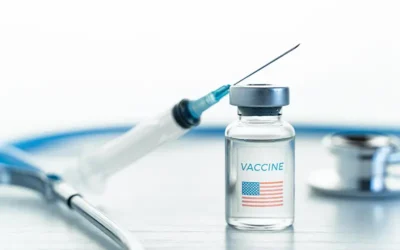Every year, the American Dental Association (ADA) reviews and updates CDT codes to document services dentists provide. Dentistry is constantly evolving and annual updates to CDT codes provide a means to accommodate the adoption of modern devices and technology by dental professionals. Companies providing dental billing services stay on top of these updates to help practices to document procedures correctly. The 2023 CDT changes that became effective on Jan. 1 include 29 new codes, 2 code deletions, and 16 nomenclature and description/policy revisions.
CDT 2023 Code Updates
- Revisions to the Intraoral Full Mouth Series (FMX) Imaging Procedure Codes
The codes in this section relate to a radiographic survey of the whole mouth intended to display the crowns and roots of all teeth, periapical areas, interproximal areas, and alveolar bone including edentulous areas.
The nomenclature and descriptors of four “intraoral – comprehensive series…” procedure codes have been revised. One key change is that the word “complete” has been replaced with “comprehensive.”
Image Capture with Interpretation:
D0210 intraoral – comprehensive series of radiographic images
D0372 intraoral tomosynthesis – comprehensive series of radiographic images
Image Capture Only:
D0709 intraoral – comprehensive series of radiographic images
D0387 intraoral tomosynthesis – comprehensive series of radiographic images
- Six Diagnostic Imaging Codes for Tomosynthesis
Tomosynthesis is a specialized emerging intraoral imaging procedure that captures a comprehensive radiographic survey, as well as bitewings and periapicals. There are 6 new diagnostic imaging codes for tomosynthesis. In addition to D0372 and D0387, the new diagnostic imaging codes for tomosynthesis include:
D0373 Intraoral tomosynthesis – bitewing radiographic image
D0374 Intraoral tomosynthesis – periapical radiographic images
D0388 intraoral – bitewing radiographic image – image capture only
D0389 periapical radiographic image – image capture only
- Six New Guided Tissue Regeneration Procedure Codes
There are 6 new codes for guided tissue regeneration procedures that allow for documenting delivery to a natural tooth, an implant, or an edentulous area – and whether the GTR procedure involves placement of a resorbable or non resorbable membrane. D4240 has a revised descriptor.
D4240 gingival flap procedure, including root planing – four or more contiguous teeth or tooth bound spaces per quadrant
D4241 gingival flap procedure, including root planing – one to three contiguous teeth or tooth bound spaces per quadrant
D4266 guided tissue regeneration, natural teeth – resorbable barrier, per site
D4267 guided tissue regeneration, natural teeth – non-resorbable barrier, per site (includes membrane removal)
D4355 full mouth debridement to enable a comprehensive oral periodontal evaluation and diagnosis on a subsequent visit
D4921 gingival irrigation with a medicinal agent – per quadrant
- New Code for Removal of Non-resorbable Membrane
Guided tissue regeneration (GTR) is surgical procedure with the goal of achieving new bone, cementum, and PDL attachment to a periodontally diseased tooth, using barrier devices or membranes to provide space maintenance, epithelial exclusion, and wound stabilization (AAP) The ADA explains the removal of the non resorbable membrane is distinct procedure delivered at a separate time, and possibly by a different dentist, than the guided tissue regeneration (GTR) procedure. The new code to document removal of the non resorbable membrane is:
D4267 guided tissue regeneration, natural teeth – non-resorbable barrier, per site
- Four New Codes for 3D Dental and Facial Surface Scanning Procedures: Direct when the patient is present, and indirect when a physical model, such as a diagnostic cast, is involved.
D0801 3D dental surface scan – direct
D0802 3D dental surface scan – indirect
D0803 3D facial surface scan – direct
D0804 3D facial surface scan – indirect
- Three Codes for Reporting HPV Vaccinations: This vaccine is injected into the muscle of the thigh or upper arm and usually administered according to a 3-dose (0, 2, 6 months) schedule.
D1781 vaccine administration – human papillomavirus – Dose 1 – Gardasil 9 0.5mL intramuscular vaccine injection.
D1782 vaccine administration – human papillomavirus – Dose 2
D1783 vaccine administration – human papillomavirus – Dose 3
- Other New CDT Codes:
D6105 removal of implant body not requiring bone removal nor flap elevation
D6106 guided tissue regeneration – resorbable barrier, per implant
D6107 guided tissue regeneration – non-resorbable barrier, per implant
D6197 replacement of restorative material used to close an access opening of a screw-retained implant supported prosthesis, per implant
D7509 marsupialization of odontogenic cyst
D7956 guided tissue regeneration, edentulous area – resorbable barrier, per site
D7957 guided tissue regeneration, edentulous area – non-resorbable barrier, per site
D9953 reline custom sleep apnea appliance (indirect)
- CDT Codes with Revised Descriptions: In addition to CDT code D0210, the following codes have revised descriptions in 2023:
D0393 virtual treatment simulation using 3D image volume or surface scan
D0709 intraoral – comprehensive series of radiographic images – image capture only
D3333 internal root repair of perforation defects
D4240 gingival flap procedure, including root planing – four or more contiguous
teeth or tooth bound spaces per quadrant
D4241 gingival flap procedure, including root planing – one to three contiguous
teeth or tooth bound spaces per quadrant
D4921 gingival irrigation with a medicinal agent – per quadrant
D7251 coronectomy – intentional partial tooth removal, impacted teeth only
D9110 palliative treatment of dental pain – per visit
D9450 case presentation, subsequent to detailed and extensive treatment planning
D8000 -D8999
- Deleted Codes:
D0351 3D photographic image
D0704 3D photographic image – image capture only
The Significance of ICD-10-CM Codes in Dental Billing
State regulations and private insurers mandate the use of ICD-10-CM codes along with dental codes when submitting dental claims. Effective since October 1, 2015, CMS mandated that all entities covered by the HIPAA must implement the ICD-10-CM diagnosis code set when submitting medical claim. Medicaid is a HIPAA-covered entity, which encompasses dental facilities. Make sure to consult your state Medicaid and other government bodies regarding the requirements and application process when submitting dental claims. Some private payers also require the application of appropriate ICD-10-CM diagnosis codes on the dental claim form, so it’s important to check their policies regarding coding rules as well.
The usage of ICD-10-CM codes in clinical records enables seamless communication between dental practices and payers on information about the patient’s medical or dental condition and proper reimbursement for your dental practice as well. The ICD codes for 2023 feature 1200 addition, 287 deletions and 28 revisions and this year, there are no notable changes to dental codes. However, there have been few notable additions and they are as follows:
- Z79.60 – Long term (current) use of unspecified immunomodulators and immunosuppressants
- Z79.61 – Long term (current) use of immunomodulator
- Z79.620 – Long term (current) use of immunosuppressive biologic
- P28.30 – Primary sleep apnea of newborn, unspecified
- P28.32 – Primary obstructive sleep apnea of newborn
- P28.33 – Primary mixed sleep apnea of newborn
- P28.40 – Unspecified apnea of newborn
- P28.41 – Central neonatal apnea of newborn
- P28.42 – Obstructive apnea of newborn
- P28.43 – Mixed neonatal apnea of newborn
Keeping up with annual CDT code updates, revisions and changes to nomenclatures or descriptors is critical for accurately documenting dental treatment. Relying on an experienced dental billing company can help practices submit error-free claims for dental procedures and enhance practice revenue. Experts also provide dental eligibility verification support. This important as coverage for many CDT codes, especially new codes, depend on the patient’s particular benefit plan.
Familiarizing yourself with the latest dental coding updates is essential for accurate billing, streamlined operations and improved patient care. Always refer to official guidelines to stay informed about coding changes. Refer to the linked blog for more information about staying compliant with the latest dental coding updates in 2024.




